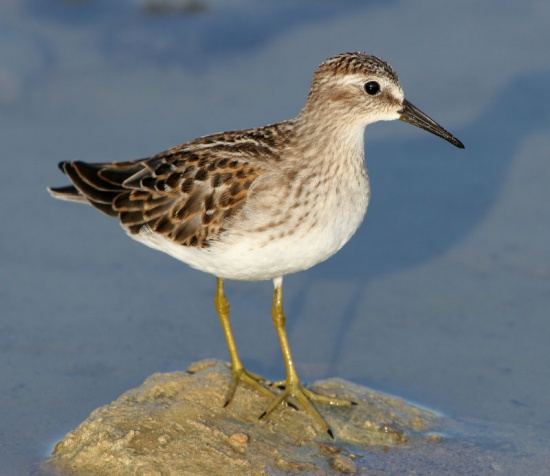- Calidris minutilla
Identification
The only peep with yellow legs. It has short thin dark bill, brown with dark brown streaks on top and white underneath. Light line above the eye and a dark crown.
Often in crouched position with knees very bent, feet planted forward (so far many times that they can appear to be feeding between their toes) and with belly much closer to ground than other peeps1. Usually found on shore instead of wading.
Similar Species
Semipalmated Sandpiper is plump compact looking, more white to throat, has slightly heavier black legs, and semipalmations between toes.
Western Sandpiper is lanky looking, has black legs, and semipalmations between toes. In Breeding plumage is heavily spotted on belly and is grayish withrufous on crown, auriculars, and scapulars.
Distribution
United States and northern South America.
Taxonomy
This is a monotypic species.
Habitat
Tundra or in bogs. In migration found at mud flats, beachs, sod farms, etc.
Behaviour
The female lays 4 eggs in a shallow scrape on the ground lined with grass and most. Both parents incubate.
These birds forage on mudflats; their diet includes small crustaceans, insects and snails.
References
- Cox, Cameron. North American Peeps: A Different Look at an Old Problem (http://surfbirds.com/Features/coxpeeps1006/coxpeeps1006.html).




